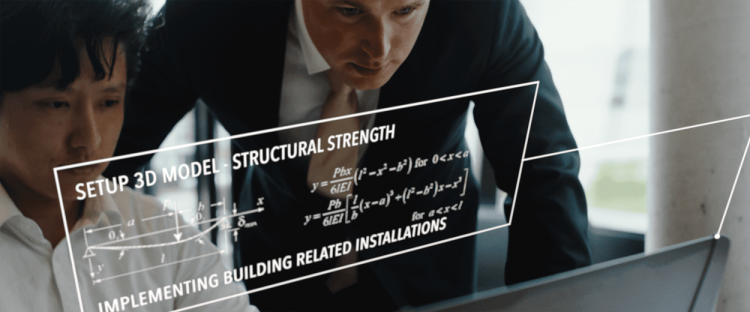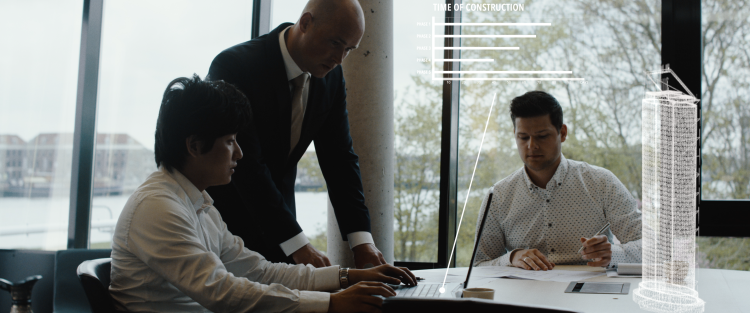



Building Information Modeling (BIM) is a powerful tool for architects, engineers, and construction professionals to plan, design, construct, and maintain buildings and infrastructure. As a BIM management expert, my job is to ensure that the BIM process is streamlined and efficient from the start of a project at the quotation stage to the delivery of BIM models. In this blog post, I will discuss some of the key steps that I take to ensure that the BIM process runs smoothly and that the project deliverables are of the highest quality.
By following these best practices, we can ensure that the BIM process is streamlined and that the project deliverables are of the highest quality. This will not only ensure the success of the current project, but also help in building a positive reputation and trust among clients, stakeholders and team members for future projects.

The first step in streamlining the BIM process is to establish a clear and detailed project scope. This includes defining project objectives, identifying deliverables, determining constraints, specifying requirements, identifying stakeholders, and documenting project scope. By taking these steps, we can ensure all stakeholders have a shared understanding of project goals and objectives, and that the project stays on track.
Define the project's objectives: Clearly state what the project aims to achieve, and ensure that all stakeholders are aligned on these objectives.
Identify the project's deliverables: Clearly define what will be produced as part of the project, such as BIM models, drawings, and specifications.
Determine the project's constraints: Identify any constraints that may impact the project, such as budget, schedule, or resource limitations.
Define the project's requirements: Identify the specific requirements that the project deliverables must meet, such as design standards, performance criteria, or regulatory compliance.
Identify the project's stakeholders: List all the parties that will be involved in or impacted by the project, such as the client, design team, construction team, and end-users.
Establish project scope documentation: Prepare a scope statement or scope management plan that documents all the above information and will serve as a reference guide throughout the project.
Communicate and get agreement on the scope: Review the scope documentation with all stakeholders, and obtain their agreement and sign-off on the scope before starting the project.
By following these steps, you can develop a clear and detailed project scope that will help ensure that all stakeholders have a shared understanding of the project's goals, objectives, and deliverables, and that the project stays on track and meets its objectives.

Once the project scope is established, selecting the right people for the project team is essential. We use various factors to decide on the best team, including skills and expertise, experience, availability, cultural fit, communication, flexibility and conflicts of interest. By assembling a team that has the skills, experience, and attitude to deliver the project successfully, we can ensure a smooth project and effective team collaboration.
When deciding on the right people for a project team, several factors should be considered:
Skills and expertise: The team members should have the necessary skills and expertise to perform their roles effectively. This includes technical skills, such as proficiency in BIM software, as well as soft skills, such as communication and problem-solving abilities.
Experience: Team members with relevant experience in similar projects will be better equipped to handle the challenges that may arise during the project.
Availability: Team members should have the availability to commit to the project and be able to meet the project's timeline.
Cultural fit: It is important to have a team that works well together and has a positive attitude, so it is important to select people that have similar work ethics and values to the rest of the team.
Communication: Team members should have good communication skills and be able to work effectively with other team members, clients, and stakeholders. At The BIM Engineers, we prioritize effective communication among team members, clients, and stakeholders to ensure that the project runs smoothly and that all stakeholders are kept informed and engaged throughout the process.
Flexibility: Team members should be able to adapt to changes in the project scope and schedule, and be willing to take on additional responsibilities if needed.
By taking these factors into consideration, you can select a team that has the skills, experience, and attitude to deliver the project successfully.

Once we have the right team in place, developing a detailed project plan is crucial. This includes breaking down the project into smaller tasks, establishing task dependencies, creating a schedule, assigning resources, identifying and mitigating risks, setting up a monitoring and control process, and communicating the plan to all stakeholders. By following these steps, we can create a detailed project plan that outlines the tasks, resources, and timelines required to deliver the project successfully, and provides a roadmap for managing and controlling the project.
Developing a detailed project plan involves several steps:
Breakdown the project into smaller tasks: Identify all the individual tasks that need to be completed in order to achieve the project's objectives.
Establish task dependencies: Identify which tasks need to be completed before other tasks can begin and establish logical sequence of the tasks
Establish a project schedule: Use the information gathered in the previous steps to create a project schedule that includes milestones, deadlines, and deliverables.
Assign resources: Determine what resources, including personnel, materials, and equipment, will be required to complete each task and assign them accordingly.
Identify and mitigate risks: Identify potential risks that could impact the project, such as scope creep, delays, or budget overruns, and develop strategies to mitigate them.
Set up a monitoring and control process: Establish a system for monitoring the project's progress, such as regular status updates and progress reports, and a process for controlling changes to the project scope, schedule, and budget.
Communicate the plan: Review and communicate the plan with all stakeholders, including the project team, clients, and other relevant parties, and obtain their agreement and sign-off.
By following these steps, you can develop a detailed project plan that outlines the tasks, resources, and timelines required to deliver the project successfully, and provides a roadmap for managing and controlling the project.

Finally, implementing a robust quality control process is essential to ensure project deliverables meet established quality standards. This includes defining quality standards, establishing quality control procedures, assigning quality control responsibilities, establishing a review and approval process, performing regular quality control checks, documenting and tracking quality issues, and continuously improving the process. By implementing a robust quality control process, we can ensure that the project deliverables are accurate, complete, and consistent, and that they meet the requirements of all stakeholders.
When deciding to use BIM software to manage project data, several criteria should be considered:
Compatibility: The BIM software should be compatible with other software used on the project, such as CAD or scheduling software, to minimize data duplication and errors.
Functionality: The BIM software should have the necessary functionality to meet the project's needs, such as the ability to create 3D models, generate 2D drawings, and perform clash detection.
User-friendliness: The BIM software should be easy to use and understand, with a user-friendly interface and well-organized menus, to minimize the learning curve and increase productivity.
Scalability: The BIM software and the BIM teams should be able to handle the project's size, complexity, and data volume, and be easily expandable to accommodate future projects.
Support and maintenance: The BIM software should have reliable technical support and maintenance services, to ensure that any issues or bugs can be quickly resolved.
Cost: The BIM software should be cost-effective and provide value for money, taking into account the project's budget and long-term costs.
Data security: The BIM software should have robust data security measures in place, to protect sensitive project data from unauthorized access.
By considering these criteria, you can select BIM software that is well-suited to the project's needs, easy to use, and cost-effective, and that will help ensure that project data is accurate, up-to-date, and easily accessible to all team members.

Streamlining the BIM process from quotation to delivery of BIM models requires a clear and detailed project scope, the right team members, a detailed project plan, and a robust quality control process. By following these steps, we can ensure that the BIM process runs smoothly, that the project deliverables meet the established quality standards and that the project is completed on time and within budget. As a BIM management expert, it is my responsibility to ensure that all of these steps are taken and that the BIM process is as efficient and effective as possible. By following these best practices, we can ensure that the BIM process is streamlined and that the project deliverables are of the highest quality. This will not only ensure the success of the current project, but also help in building a positive reputation and trust among clients, stakeholders and team members for future projects.
If you're interested in learning more about how we can streamline your BIM process and ensure the success of your project, please visit fill out your contact details below or contact us directly. We're here to help you achieve your project goals and deliver high-quality BIM models.
Copyright © 2024 The BIM Engineers. All Rights Reserved | Design & Developed by Prettify Creative